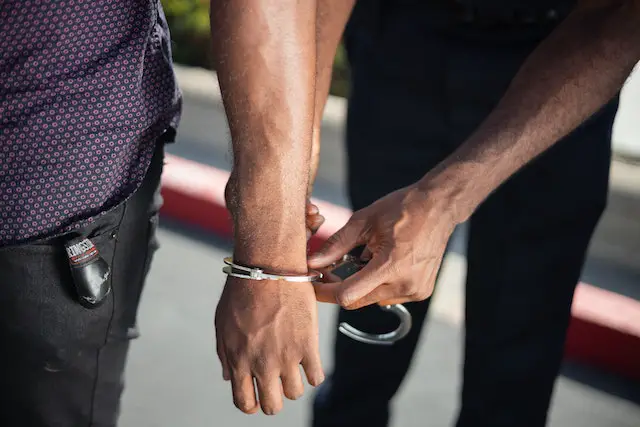
Is it Illegal to Send Screenshots of Conversations?
The contents of this web page are for informational and educational purposes only, and nothing you read is intended to be legal advice. Please review our disclaimer before taking action based upon anything you read or see.
Today, many people usually ask this question: “Is it illegal to send screenshots of conversations?” The simple answer is no. It is not illegal. Digital duplicates of a discussion between two or more individuals are what screenshots of chats are all about. When you pass or circulate the screenshots without the other(s) in question’s agreement, the issue of legality emerges.
Considering the laws in your nation or state concerning legality is crucial. Nevertheless, as long as they aren’t for something shady or illegal, like identity theft or blackmail, it is generally OK to screenshot discussions.
In reality, many individuals utilize screenshots to prove in court or report abuse or intimidation. Screenshots may be essential to illustrate a point, provide background information, or record a dialogue for later use. There is no legal problem as long as you utilize the screenshots lawfully. Come along as we highlight more on this below.
Privacy Laws and Regulations Governing the Sharing of Personal Information

Sharing private details has become a major issue in the current digital era. And governments all over the globe have passed privacy laws and regulations to protect personal data. These laws are essential to safeguard people’s right to privacy while guaranteeing enterprises are open about gathering, using, and disclosing personal information.
The General Data Protection Regulation (GDPR) of the European Union is one such confidentiality law regulating private data transmission. The GDPR mandates that organizations get people’s prior permission before collecting and processing their data. Firms must also allow people to opt out of collecting and distributing personal data and disclose the reason(s) for the data collection. Additionally, the GDPR requires firms to protect customer data and notify customers of any data breaches within 72 hours.
State-specific privacy regulations in the US also govern the sharing of personal information. Firms that disregard CCPA rules risk paying hefty penalties.
When it may be Legal to Share Screenshots of Conversations
It may be legal to share screenshots of conversations in the following scenarios:
- Sharing screenshots is usually OK when a discussion isn’t private. For instance, privacy is not required when communicating on a public forum. Hence sharing screenshots of the chat is acceptable.
- Secondly, sharing screenshots could be possible if complete with everyone’s permission. Sharing screenshots of conversations would only be valid if all participants consent.
- Third, posting screenshots of chats is acceptable as long as it serves a legitimate objective. For instance, sharing screenshots of a chat containing unlawful activities might be permissible in court.
- Fourthly, when it’s for the sake of public safety, distributing screenshots may also be possible. For instance, a screenshot of a chat containing a threat of violence may be available to stop damage to others.
- Fifth, publishing screenshots for protection against assault, intimidation, or other abuse may be essential. It may be acceptable and important to share the screenshots if the dialogue includes proof of this activity.
- Finally, distributing screenshots to exercise one’s rights may be lawful. Sharing screenshots of a discussion that includes violating one’s rights, for instance, may be acceptable while exercising such rights.
How to Protect Yourself When Sharing Screenshots of Conversations
You can protect yourself when sharing screenshots of conversations through the following steps:
Step 1: Get permission from all parties involved
To maintain privacy and foster trust among colleagues, getting consent from all concerned individuals before sharing a screenshot is crucial. It’s crucial to highlight privacy, get their permission, and respect their choice while outlining the goal and significance of sharing the snapshot. These procedures guarantee the sharing of screenshots transparently and morally while protecting confidentiality.
Step 2: Consider blurring out sensitive information
The screenshot should also be cropped to remove personally identifiable data, including phone numbers, names, login credentials, electronic mail addresses, etc. This respects the person’s privacy and safeguards you from legal ramifications. Consider using applications or software to pixelate or obscure specific data to provide further safety.
It helps to safeguard the information’s authenticity, safety, and confidentiality. And it hinders unlawful access to or use of sensitive or personal data. Obscuring critical information also makes it simple to share screenshots without running the danger of breaching anyone’s privacy rights or moral principles.
Step 3: Avoid sharing screenshots publicly
It’s necessary to take precautions to avoid posting screenshots publicly since blurring private data isn’t always sufficient. The blurred screenshot should be safely saved. Also, the context should be considered; social networking sites should be avoided too.
And you should make sure to verify everything twice before posting. By using these suggestions, you’ll be able to send screenshots without worrying about disclosing confidential information and protect the privacy of everyone in the chat.
Step 4: Be mindful of who you share the screenshots with
Try to restrict the number of individuals you share the discussion with. The likelihood of the information falling into the wrong hands increases the more individuals you share it with. The most effective action plan is to only disclose information to those who require it to reduce the likelihood of any leaking.
Ensure the individual you share the screenshots with is reliable and has no personal stake in the information. It may result in unwelcome curiosity or even harassment if you share it with many people or strangers.
It’s crucial to agree on the secrecy and privacy of the communication before sharing it with someone else. This may assist in preventing miscommunications and any damage brought on by disclosing sensitive material.
Step 5: Delete the screenshots once they are no longer needed
Removing the chat snapshot from your laptop or smartphone as soon as you’ve sent it is critical. This will prevent you or the other party from using the screenshot against you in the future. You would rather not have a screenshot that you believed was wiped months ago come as a surprise. So it’s essential to give getting rid of the snapshot high attention.
Step 6: Avoid sharing screenshots that could be used to harm someone
You must consider the delicate nature of the data you will give. Before sharing screenshots, ask yourself whether the data is confidential and if it may be harmful to someone else. It is better to keep the screenshot to yourself if the response is yes.
To mitigate any potential harm arising from sharing the screenshot, it might be advisable, under specific circumstances, to personally share the data or utilize a secure channel.
Step 7: Understand the legal implications of sharing screenshots
Familiarize yourself with local rules and legislation governing internet privacy. Different confidential information and personal data regulations apply to different nations and jurisdictions. Learn about these laws to be aware of your responsibilities and rights as a user.
In the digital era, distributing screenshots can seem simple to convey information, but there are drawbacks. Sharing screenshots may have major legal repercussions, including copyright infringement, breach of privacy, contract breaches, and breaking several laws. Before sharing any data or material, thinking carefully about the possible legal ramifications is crucial.
Step 8: Be aware of the terms of service for the platform where the conversation took place
Terms of service, or TOS, are the written agreements that websites and applications require users to abide by. The terms and conditions in which the service may be essential are set out in this agreement. The obligation to control talks on the platform is one of TOS’s most important elements.
Step 9: Consider using secure messaging apps instead of a screenshot
There are some benefits to using encrypted messaging applications rather than sharing your screens. End-to-end encryption, extra security measures, and accessibility across many devices are all included in this.
When communicating, security must always come first, particularly in the digital era when there is a greater than ever danger of cyber-attacks. To protect the confidentiality of your data and the security of your means of communication, you should switch to encrypted messaging applications.
My Opinion
Overall, sending screenshots of chats is not illegal. It is crucial to note that transmitting screenshots of chats could, in certain circumstances, be an invasion of privacy. This is valid if the communication needs to be private and the other party(ies) did not approve it for sharing. Therefore, it is essential to handle screenshots with caution.
References
- Hambridge, S.; Lunde, A: https://www.rfc-editor.org/rfc/rfc2635
- Email Metrics Report: https://web.archive.org/web/20071203010401/http://www.maawg.org/about/MAAWG20072Q_Metrics_Report.pdf
- Free sharing of protected works while compensating creators: https://europa.eu/citizens-initiative-forum/blog/free-sharing-protected-works-while-compensating-creators_en
- What is the Freedom of Information Act? https://ico.org.uk/for-organisations/guide-to-freedom-of-information/what-is-the-foi-act/

I’m a driven and accomplished law graduate and post-graduate, passionate about sharing my legal expertise via my blog. I hold a Bachelor’s degree in Law from the University of London (UK) and a Master’s in Law from the University of Derby (UK). Both gave me the foundational knowledge and skills to excel in my chosen career path.
Throughout my academic journey, I have gained extensive knowledge in various fields of Law, including Corporate and Business Law in the USA, Criminal Law, International Law, US Copyright law, and most importantly, American Constitutional law.


Comments are closed.